
Gregor Reisch (c. 1467 – 9 May 1525) was a German Carthusian monk and humanist scholar. He is best known for his compilation Margarita Philosophica, one of the earliest printed encyclopedias of general knowledge. [1]

Gregor Reisch (c. 1467 – 9 May 1525) was a German Carthusian monk and humanist scholar. He is best known for his compilation Margarita Philosophica, one of the earliest printed encyclopedias of general knowledge. [1]
Reisch was born at Balingen in Württemberg, about 1467. He became a student at the University of Freiburg in 1487 and received the degree of magister in 1489. He remained at the university as a teacher and became a Carthusian monk around 1500 but continued his teaching and scholarly work. From 1500 to 1502 he was prior at Kleinbasel and from 1503 to shortly before his death he was prior at Freiburg Charterhouse. In 1510, Reisch was appointed counselor and father confessor to Maximilian I. [2] He was also a visitor (inspector) for the Rhenish province of his order and as such he made strenuous exertions to combat Lutheranism.
Reisch was a friend of the most celebrated humanists of the era. [3] His notable students included Johann Eck and Martin Waldseemüller. Reisch had a reputation for adaptability, and was regarded as an "oracle". He was one of the most conspicuous of the intellectuals at the commencement of the new era who sought to prepare encyclopedic works of knowledge.
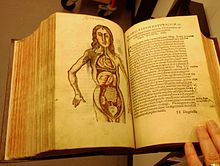
His chief work is the Margarita Philosophica (Philosophical Pearl), first published in 1503 and widely used as a general textbook in universities throughout western Europe. It is an encyclopedia of knowledge and contains in twelve books: Latin grammar, dialectics, rhetoric, arithmetic, music, geometry, astronomy, physics, natural history, physiology, psychology, and ethics. The usefulness of the work was increased by numerous woodcuts and a full index. [4]
Like many textbooks of the time, the book was written as a dialogue between student and teacher. The book was very popular for its comparative brevity and form. It was long a standard textbook of the universities. Alexander von Humboldt said of it that it had "for a half-century, aided in a remarkable manner the spread of knowledge".
The first two editions were printed by Johann Schott from Strassburg. [5] In 1508 Michael Furter and Johann Schott jointly published a third edition of the Margarita Philosophica. Some woodcuts in the book are assumed to be made by Urs Graf. [5]
In 1510 Reisch also published the statutes and privileges of the Carthusian Order, and assisted Erasmus of Rotterdam in his edition of Jerome.
![]() This article incorporates text from a publication now in the public domain : Herbermann, Charles, ed. (1913). "Gregor Reisch". Catholic Encyclopedia . New York: Robert Appleton Company.
This article incorporates text from a publication now in the public domain : Herbermann, Charles, ed. (1913). "Gregor Reisch". Catholic Encyclopedia . New York: Robert Appleton Company.
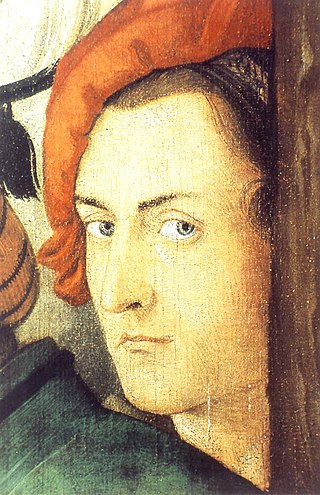
Hans Baldung, called Hans Baldung Grien,, was a painter, printer, engraver, draftsman, and stained glass artist, who was considered the most gifted student of Albrecht Dürer and whose art belongs to both German Renaissance and Mannerism.

Martin Waldseemüller was a German cartographer and humanist scholar. Sometimes known by the Latinized form of his name, Hylacomylus, his work was influential among contemporary cartographers. His collaborator Matthias Ringmann and he are credited with the first recorded usage of the word America to name a portion of the New World in honour of Italian explorer Amerigo Vespucci in a world map they delineated in 1507. Waldseemüller was also the first to map South America as a continent separate from Asia, the first to produce a printed globe, and the first to create a printed wall map of Europe. A set of his maps printed as an appendix to the 1513 edition of Ptolemy's Geography is considered to be the first example of a modern atlas.
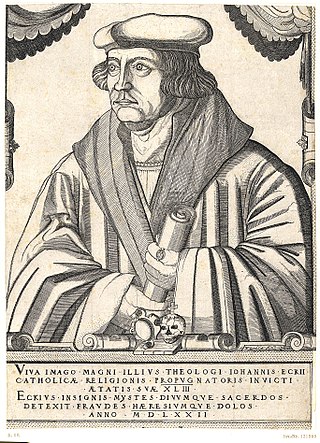
Johann Maier von Eck, often anglicized as John Eck, was a German Catholic theologian, scholastic, prelate, and a pioneer of the counter-reformation who was among Martin Luther's most important interlocutors and theological opponents.

Johann Reuchlin, sometimes called Johannes, was a German Catholic humanist and a scholar of Greek and Hebrew, whose work also took him to modern-day Austria, Switzerland, Italy, and France. Most of Reuchlin's career centered on advancing German knowledge of Greek and Hebrew.

Johann Cochlaeus (Cochläus) was a German humanist, music theorist, and controversialist.

Sebastian Brant was a German humanist and satirist. He is best known for his satire Das Narrenschiff.

Ship of Fools is a satirical allegory in German verse published in 1494 in Basel, Switzerland, by the humanist and theologian Sebastian Brant. It is the most famous treatment of the ship of fools trope and circulated in numerous translations.
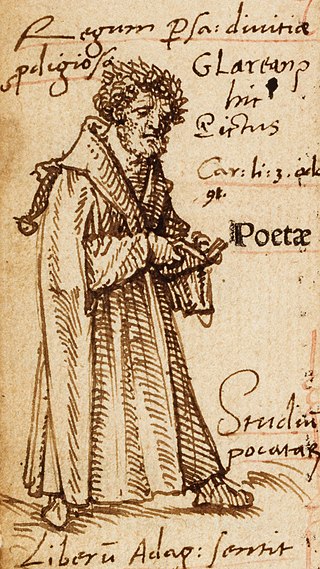
Heinrich Glarean also styled Henricus Glareanus was a Swiss music theorist, poet and humanist. He was born in Mollis and died in Freiburg im Breisgau.

Ulrich von Hutten was a German knight, scholar, poet and satirist, who later became a follower of Martin Luther and a Protestant reformer.
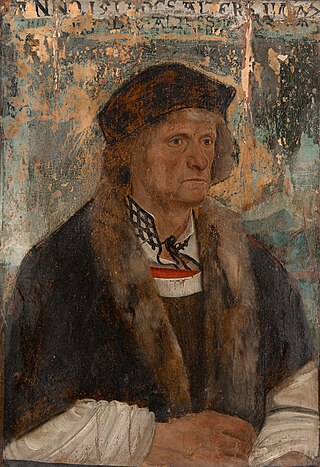
Johann Amerbach was a celebrated printer in Basel in the 15th century. He was the first printer in Basel to use the Roman type instead of Gothic and Italian and spared no expense in his art.

Beatus Rhenanus, born as Beatus Bild, was a German humanist, religious reformer, classical scholar, and book collector.

Konrad Heresbach was a Rhenish Reformer, Calvinist, humanist and educator.

The Jagiellonian globe, also known as the Globus Jagellonicus, is a mechanical armillary sphere made in France before 1510. It is an astronomical instrument and a universal clock tracking both local solar time and sidereal time. The central brass sphere is engraved with a map of Earth and contains the clock mechanism. It is the oldest extant globe to use the name America.
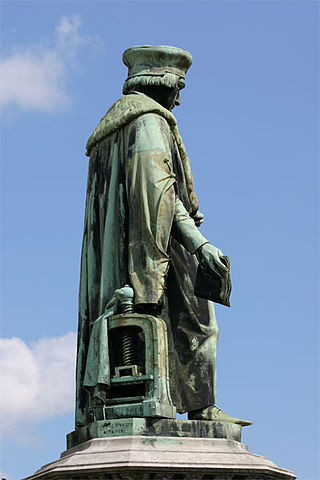
Dirk Martens was a printer and editor in the County of Flanders. He published over fifty books by Erasmus and the very first edition of Thomas More's Utopia. He was the first to print Greek and Hebrew characters in the Netherlands. In 1856 a statue of Martens was erected on the main square of the town of his birth, Aalst.
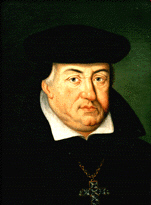
Jakob von Eltz-Rübenach (1510–1581) was the Archbishop-Elector of Trier from 1567 to 1581.

Michael Furter was a printer of incunabula in Basel.

Portrait of Erasmus is a late period 1526 copper engraving by the German artist Albrecht Dürer. The portrait was commissioned by the Dutch Renaissance humanist Desiderius Erasmus of Rotterdam when the two men met in the Netherlands between 1520 and 1521. Erasmus was then at the height of his fame and required representations of himself to accompany his writings. It was not completed until some six years later, but proceeds a number of preparatory sketches.

Martinus Dorpius or Maarten van Dorp (1485–1525) or Mrtin Dorp was a humanist and a theologian at the Old University of Leuven. He is best known as a friend and correspondent of Erasmus.
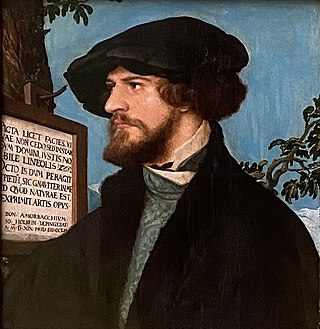
Bonifacius Amerbach was a jurist, scholar, an influential humanist and the rector of the University of Basel for several terms.

Johannes Schott was a book printer from Strasbourg. He printed a large number of books, including tracts from Martin Luther and other Reformers. He was a well-educated man, who had relationships with some of the leading humanists of his time. His press also was one of the first to be able to print chiaroscuro woodcuts.